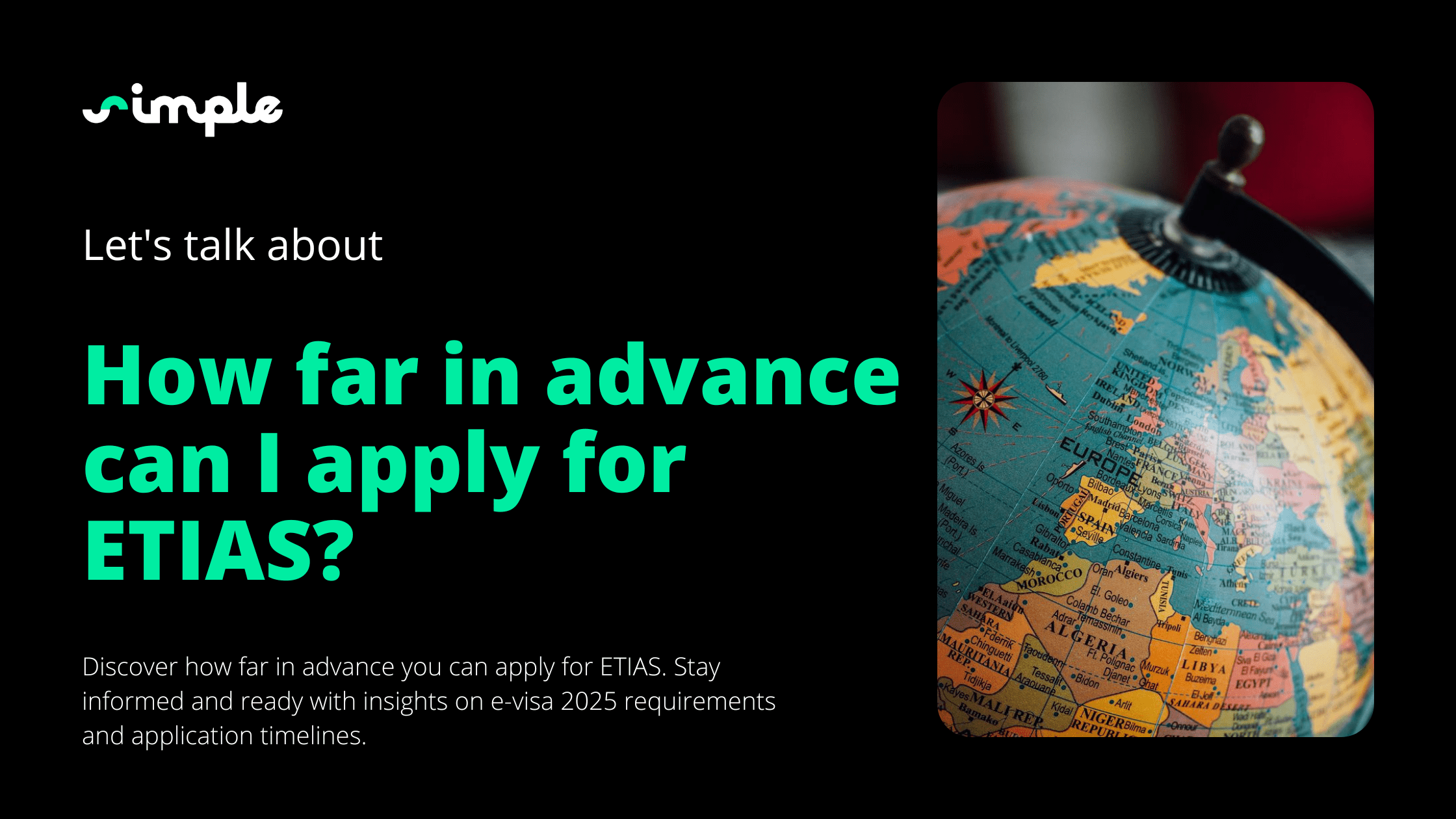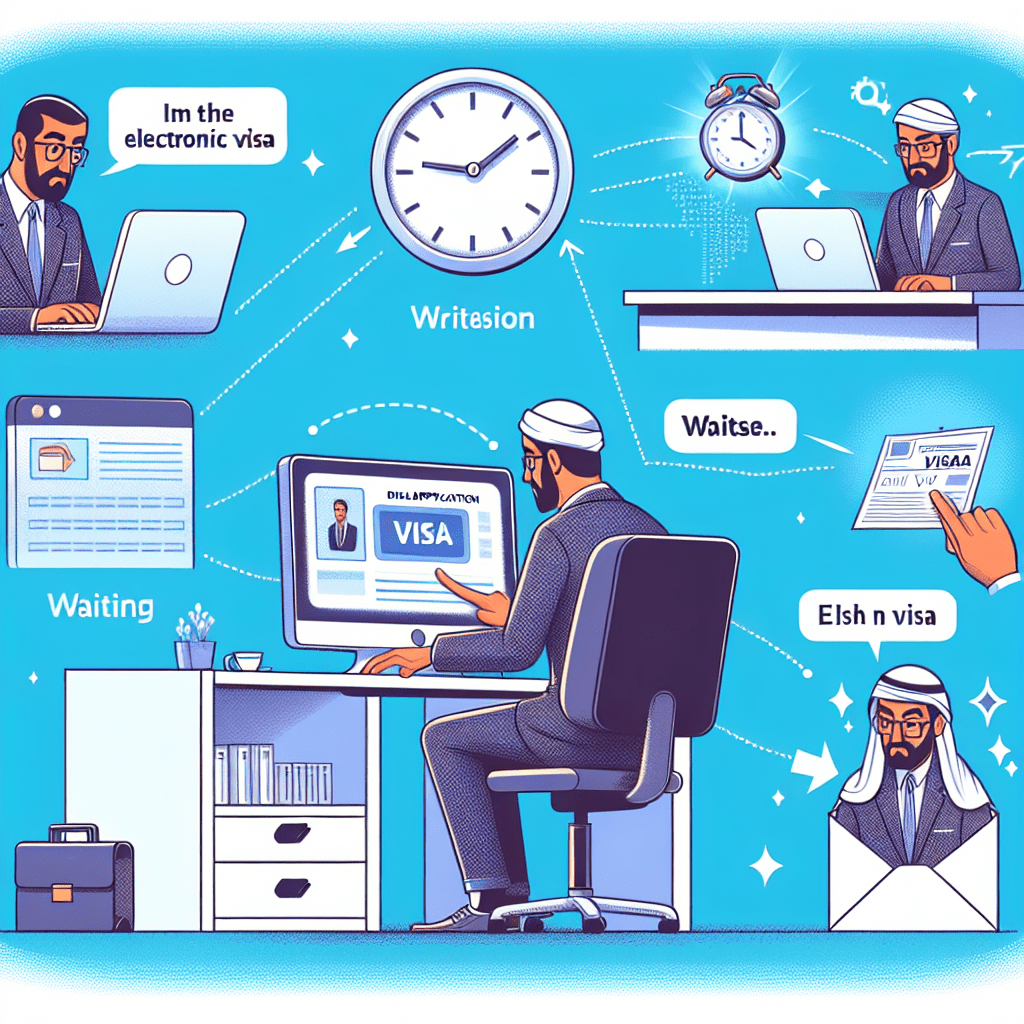How far in advance can I apply for ETIAS?

The European Travel Information and Authorization System (ETIAS) is set to revolutionize the way travelers enter the Schengen Area. As global travel becomes increasingly digitized, understanding the nuances of ETIAS is crucial for anyone planning a trip to Europe. This system is designed to enhance security and streamline the entry process, making it a vital component of modern travel. With the rise of digital travel authorization, such as the e-visa 2025, travelers are becoming more accustomed to electronic visa processes that promise efficiency and convenience.
As we look towards the future, the concept of e-visas and digital travel permits is becoming more prevalent. The implications for travelers are significant, as these systems promise to reduce wait times and simplify the application process. However, with these advancements come questions about the timing and preparation required for such applications. One of the most pressing questions for travelers is: how far in advance can one apply for ETIAS? Understanding the timeline and requirements for ETIAS is essential for ensuring a smooth travel experience. This discussion aims to provide clarity on this topic, offering insights into the optimal timing for your ETIAS application.

Understanding ETIAS and its Purpose
Describe ETIAS and its Role in European Travel Security
The European Travel Information and Authorization System (ETIAS) is a pivotal development in the realm of international travel, specifically designed to bolster security within the Schengen Area. This system was conceived in response to the growing need for enhanced border management and security measures across Europe. The background of ETIAS is rooted in the European Union’s commitment to safeguarding its borders while facilitating seamless travel for millions of visitors each year. By requiring travelers from visa-exempt countries to obtain a digital travel authorization before entering the Schengen Zone, ETIAS aims to pre-screen individuals and identify potential security risks before they reach European soil.
ETIAS is not a visa, but rather a digital travel authorization that complements existing border control measures. It is part of a broader strategy to modernize and streamline the entry process for travelers, ensuring that security checks are conducted efficiently and effectively. The electronic visa process involved in ETIAS is designed to be user-friendly, allowing applicants to complete the necessary steps online through a dedicated visa application portal. This approach not only enhances traveler safety but also supports European nations in maintaining robust border integrity.
Clarify the Target Group and Eligibility for ETIAS Application
ETIAS is targeted at travelers from countries that currently enjoy visa-free access to the Schengen Area. This includes citizens from over 60 nations, such as the United States, Canada, Australia, and Japan, among others. These travelers are required to apply for ETIAS before embarking on their journey to Europe. The eligibility criteria for ETIAS are straightforward, focusing primarily on the traveler’s nationality and the purpose of their visit. Applicants must provide personal information, travel details, and answer security-related questions as part of the online visa application process.
While ETIAS is mandatory for most travelers from visa-exempt countries, there are certain exclusions. For instance, individuals holding a valid Schengen visa or those traveling for specific purposes, such as diplomatic missions, may be exempt from the ETIAS requirement. Understanding these criteria is crucial for travelers to ensure compliance and avoid any disruptions to their travel plans. The introduction of ETIAS represents a significant shift in future visa requirements, emphasizing the importance of digital travel authorization in modern border management.
Discuss the Benefits of ETIAS for Travelers and European Nations
ETIAS offers a multitude of benefits for both travelers and European nations. For travelers, the system provides a convenient and efficient way to secure travel authorization, reducing the need for lengthy visa application processes. The digital entry permit obtained through ETIAS allows for smoother and faster entry into the Schengen Area, minimizing wait times at border checkpoints. This level of convenience is particularly appealing to frequent travelers and those planning short-term visits to Europe.
From a security perspective, ETIAS plays a crucial role in enhancing the safety of both travelers and European citizens. By pre-screening individuals before they arrive, the system helps to identify potential security threats and prevent them from entering the Schengen Zone. This proactive approach to border management supports the integrity of European borders and contributes to the overall security of the region. Additionally, ETIAS facilitates better data sharing and cooperation among European nations, strengthening their collective ability to address security challenges.
In summary, ETIAS represents a significant advancement in the realm of digital travel authorization, offering numerous advantages for travelers and European countries alike. As we move towards a future where virtual visa services and electronic travel permits become the norm, understanding the role and benefits of systems like ETIAS is essential for anyone planning to visit Europe. The implementation of ETIAS underscores the importance of future travel documentation in ensuring safe and efficient international travel.

Application Timeline and Requirements
Define the Optimal Time Frame for Applying for ETIAS
Understanding the optimal time frame for applying for ETIAS is crucial for ensuring a smooth travel experience. The standard lead time for processing an ETIAS application is typically short, with most applications being approved within minutes. However, it is advisable to apply well in advance of your planned travel dates to account for any unforeseen delays or issues that may arise during the application process. The recommended period to initiate your ETIAS application is at least a few weeks before your intended departure date. This allows ample time for processing and provides a buffer in case additional information or documentation is required.
While the electronic visa process for ETIAS is designed to be efficient, applying early ensures that you have the necessary digital travel authorization in hand before your trip. This proactive approach is particularly important for travelers who may have complex travel itineraries or who are planning to visit multiple countries within the Schengen Area. By securing your ETIAS well in advance, you can focus on other aspects of your travel preparations, confident in the knowledge that your entry into Europe is assured.
Overview of Required Documents and Key Information Needed
To successfully apply for ETIAS, travelers must provide a range of documents and information as part of the online visa application process. The primary document required is a valid passport, which must be current and have at least three months of validity remaining beyond your planned departure from the Schengen Area. In addition to your passport, you will need to provide personal information such as your full name, date of birth, and nationality. Travel details, including your intended arrival and departure dates, as well as the first country you plan to visit, are also necessary.
The application process involves answering a series of security-related questions, which are designed to assess your eligibility for entry into the Schengen Zone. These questions may cover topics such as your criminal history, previous travel to conflict zones, and any past deportations or refusals of entry. It is important to answer these questions truthfully and accurately, as discrepancies or omissions could lead to delays or denial of your ETIAS application. Familiarizing yourself with the visa application guidelines and ensuring that you have all the required information at hand will help streamline the process and increase the likelihood of a successful application.
Explore Common Challenges and Solutions in the Application Process
While the ETIAS application process is generally straightforward, there are common challenges that travelers may encounter. One potential pitfall is the submission of incorrect or incomplete information, which can delay the approval of your digital entry permit. To avoid this, double-check all the details you provide and ensure that they match the information on your passport and other travel documents. Another challenge is technical issues with the visa application portal, which can occur due to high demand or system updates. If you experience technical difficulties, try accessing the portal at a different time or from another device.
In some cases, travelers may be asked to provide additional documentation or clarification on certain aspects of their application. If this occurs, respond promptly and provide the requested information to avoid further delays. It is also advisable to keep a copy of your application and any correspondence with the ETIAS authorities for your records. By being prepared and proactive, you can address any issues that arise and ensure a smooth application process. Understanding the e-visa eligibility criteria and being aware of potential challenges will help you navigate the ETIAS application with confidence and ease.

Future Developments and Considerations for E-Visa 2025
Assess the Influence of Technological Advancements on E-Visa Processes
The landscape of digital travel authorization is rapidly evolving, with technological advancements playing a pivotal role in shaping the future of e-visa processes. As we approach 2025, we can anticipate significant enhancements in application systems, driven by innovations in technology. One of the key areas of development is the integration of biometric and artificial intelligence (AI) technologies into the e-visa system. These technologies promise to streamline the electronic visa process by enabling faster and more accurate identity verification, reducing the risk of fraud, and enhancing overall security.
Biometric technologies, such as facial recognition and fingerprint scanning, are likely to become standard components of the e-visa application process. These tools can expedite the verification of an applicant’s identity, ensuring that the person applying for the visa is indeed the individual who will be traveling. AI technologies, on the other hand, can be leveraged to analyze application data more efficiently, identifying potential red flags and expediting the decision-making process. As these technologies continue to advance, we can expect the e-visa processing time to decrease, making the application process more convenient for travelers.
Consideration of Policy Changes Impacting Future Applications
In addition to technological advancements, policy changes are another critical factor that will influence future e-visa applications. Legislative trends and geopolitical factors can significantly impact the regulations governing digital travel authorization systems like ETIAS. As governments around the world respond to evolving security challenges and international relations, we may see changes in the criteria for e-visa eligibility and the requirements for obtaining an electronic travel permit.
Potential legislative trends could include stricter security measures, changes in the list of countries eligible for visa-free travel, or modifications to the application process itself. Geopolitical factors, such as shifts in diplomatic relations or regional conflicts, may also lead to adjustments in e-visa policies. Travelers should be aware of these potential changes and consider how they might affect their future travel plans. Staying informed about policy developments is essential for ensuring compliance with future visa requirements and avoiding any disruptions to travel.
Provide Insights on Staying Informed About Updated Requirements
Given the dynamic nature of e-visa systems and the potential for changes in requirements, it is crucial for travelers to stay informed about the latest developments. One effective way to keep abreast of policy changes is to regularly consult official government websites and trusted online immigration services. These resources often provide up-to-date information on visa application guidelines, eligibility criteria, and any recent updates to the e-visa system.
Travelers should also consider subscribing to newsletters or alerts from relevant authorities, which can provide timely notifications about changes in visa policies or application procedures. Additionally, it is advisable to check for updates well in advance of any planned travel, as this allows sufficient time to adjust plans or gather any additional documentation that may be required. By staying informed and proactive, travelers can navigate the complexities of future travel documentation with confidence and ease, ensuring a seamless travel experience in the years to come.

Conclusion
Applying for ETIAS well in advance of your travel plans is a crucial step in ensuring a seamless and stress-free journey to Europe. The importance of early application cannot be overstated, as it provides travelers with the necessary time to address any potential issues that may arise during the application process. By securing your digital travel authorization ahead of time, you can avoid last-minute complications and focus on enjoying your trip. The electronic visa process for ETIAS is designed to be efficient, but unforeseen delays can occur, making early application a wise strategy. This proactive approach not only guarantees that you have the required travel documentation in hand but also allows you to plan your itinerary with confidence, knowing that your entry into the Schengen Area is assured.
As we look towards the future, the landscape of e-visa processes is expected to evolve, driven by technological advancements and policy changes. To navigate these changes effectively, travelers must engage in proactive research and preparation. Staying informed about updates to e-visa eligibility criteria, application guidelines, and technological innovations is essential for ensuring compliance with future visa requirements. By regularly consulting reliable sources of information and keeping abreast of developments in digital travel authorization systems, travelers can adapt to changes and make informed decisions about their travel plans. Embracing a proactive mindset and being prepared for future developments will empower travelers to navigate the complexities of e-visa processes with ease, ensuring a smooth and enjoyable travel experience in the years to come.